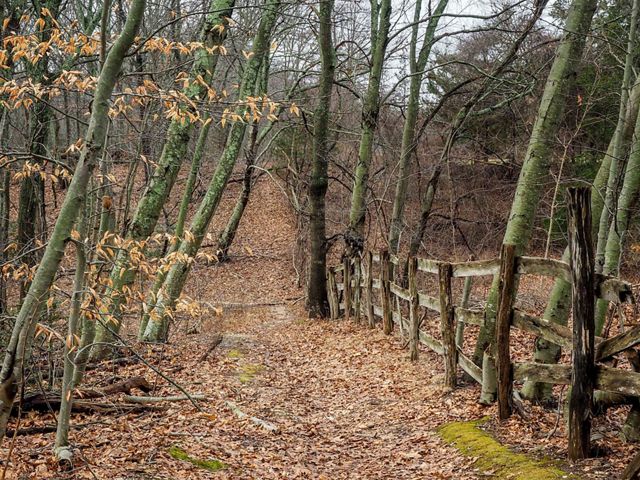
Neversink Preserve Vegetation at Neversink Preserve in the Catskills region of New York. © Carl Heiman II
Are you longing for a break from the hustle and bustle of New York City? Good news! Nature escapes are closer than you think! While NYC offers its own green spaces, countless adventures are awaiting just a short trip away. From serene forests to breathtaking views, there’s a nature preserve perfect for your day trip. Whether you’re a hiker, bird-watcher, or simply a nature enthusiast, these top five nature preserves are sure to delight and rejuvenate your spirit. So pack your bags, grab your camera, and get ready to explore the great outdoors just a stone’s throw from the city!
The Eugene and Agnes Meyer Nature Preserve
Highlights
Be on the lookout for rare plants and how glaciers influenced topography throughout the preserve.
Two distinct parcels with exceptional rock formations and vernal pools make up this preserve. In the rugged east parcel, deciduous forest, hemlock stands and mountain laurel thickets crown rocky outcrops, and steep cliffs rim Byram Lake Reservoir. In the western parcel, native grasses and wildflowers blanket meadows that provide excellent habitat for mammals, birds and insects. A number of reptile and amphibian species thrive in the streams and red maple swamps throughout both parcels.
Getting Here
From the entrance kiosk, a pair of color-coded trails, complete with distance markers and directional arrows, leads you along the edge of the gorge to numerous landmarks.
There are separate entrances for these two parcels:
- The Western Parcel trailhead is located on Sarles Street in Mount Kisco; this offers a mowed grass trail that winds through the open meadows, with a spur trail that dips into the forest; this option is less intensive.
- The Eastern Parcel trailhead is located on Oregon Road in Armonk; this offers a more forested trail system with more ups and downs. The Orange Trail is stunning, with many wildflowers in bloom and a path along the creek. Folks could then loop back using the Red or Blue trail. (Note: the directional signage on the Eastern side is not yet complete, so please keep a map with you to double-check at intersections and keep track of where you are.)
Parking: Eastern and western parcel lots for three cars each
Public Transport: Amtrak to Croton-Harmon station, then a 30-minute cab to preserve or Metro North to Mount Kisco station, then a 15-minute cab to preserve
Cell Service: Spotty
Map and More Information

Mianus River Gorge Preserve
Highlights
Look for bobcats, long tailed weasels, wood turtles, eastern gray treefrogs, northern dusky salamanders, white-tailed deer and eastern turkeys.
Protected in 1955, this site is the birthplace of The Nature Conservancy as it was our first land conservation project. Here, the wild Mianus River rushes through a steep gorge on its way to Long Island Sound. On its cool, moist banks, a magnificent cathedral of 350-year-old hemlocks stand more than 100 feet tall, and beyond the river, lush fern gullies surround the lovely Havemeyer Falls. At the Hobby Hill Quarry in the middle of the preserve, 18th-century mining left a gorgeous rock mosaic of mica, feldspar and quartz.
The Nature Conservancy holds title to 555 acres here, while the remaining 183 acres is owned by the Mianus River Gorge Preserve who now manages the entire preserve.
Getting Here
From the entrance kiosk, look for a pair of color-coded trails with distance markers and directional arrows that will lead you along the edge of the gorge to numerous landmarks. There are bathrooms available for use.
Parking: Abundant parking is avialable at trailhead
Public Transport: Amtrak to Croton-Harmon station, then a 30-minute cab to preserve or Metro North to Mount Kisco station, then a 15-minute cab to preserve.
Cell Service: Spotty
Map and More Information
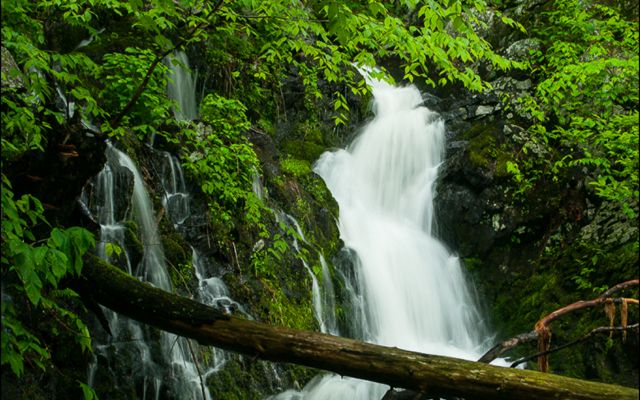

Arthur W. Butler Memorial Sanctuary
Highlights
Observe a variety of hawks, falcons and other raptors during the autumn hawk migration. Other animals here include red fox, coyote, great-horned owls, barred owls and screech owls. The summer brings songbirds such as wood thrush, warblers and scarlet tanagers.
There are six forest communities on the preserve: oak-dominant mixed hardwood, oak-hickory, mixed mesophytic, hemlock-mixed hardwood, hemlock dominant and wetland swamp forest, as well as areas of white pine and Norway spruce plantations.
This land’s rugged outcrops and boulder-strewn hills provide a solid foundation for deciduous forests, flowing streams and swamps teeming with flora and fauna. The Nature Conservancy is helping protect and conserve this natural landscape by studying deer’s impact on the forests and managing invasive species to encourage forest regeneration.
Getting Here
Explore all that Arthur W. Butler Memorial Sanctuary has to offer in our trail map. There are five main trails and three connector trails totaling 6.5 miles.
The Red Loop, counterclockwise, is a moderately strenuous hike of just under 3 miles with some varying ups and downs. But feel free to cobble together your own adventure by using the map. We advise taking a photo of the map at the trailhead.
Portapotty will be available for us for the season starting May 20.
Parking: Parking for 10 vehicles. Overflow parking allowed along Lake Bridge
Public Transport: Amtrak to Croton-Harmon station, then a 30-minute cab to preserve or Metro North to Mount Kisco station, then a 15-minute cab to preserve
Cell Service: Spotty
Map and More Information
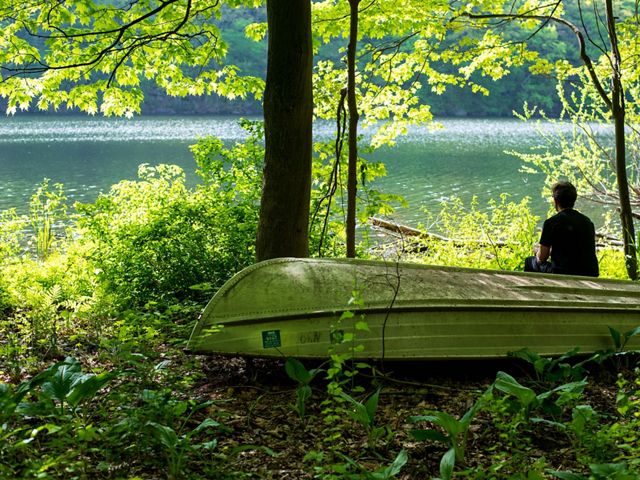
Uplands Farm Sanctuary
Highlights
True to its name, Uplands Farm Sanctuary in Cold Spring Harbor retains the appearance of an old dairy farm, complete with a silo and open meadows that were once cattle pastures. The preserve offers visitors the chance to enjoy a variety of natural habitats and native species. Nearly 2.5 miles of marked trail meanders from bird and butterfly meadows, through deciduous forests, and into a white pine-shaded ravine.
The vast wildflower meadows provide important habitat for a wide variety of plants and animals, including milkweed, goldenrod, and dozens of butterfly species. Bird species associated with this type of habitat are Eastern bluebird, tree swallow, and blue-winged warbler.
NEW! ADA (wheelchair-accessible) trail now open!
Getting Here
If you’re interested in longer hikes, the West Loop Trail at Uplands Farm connects to the 20-mile Nassau-Suffolk Trail, part of the Long Island Greenbelt where one can hike from Cold Spring Harbor south to Massapequa. Bathrooms are available for use.
Parking: Parking for 10 vehicles
Public Transport: LIRR Cold Spring Harbor train station then cab to preserve.
Cell Service: Good
Map and More Information

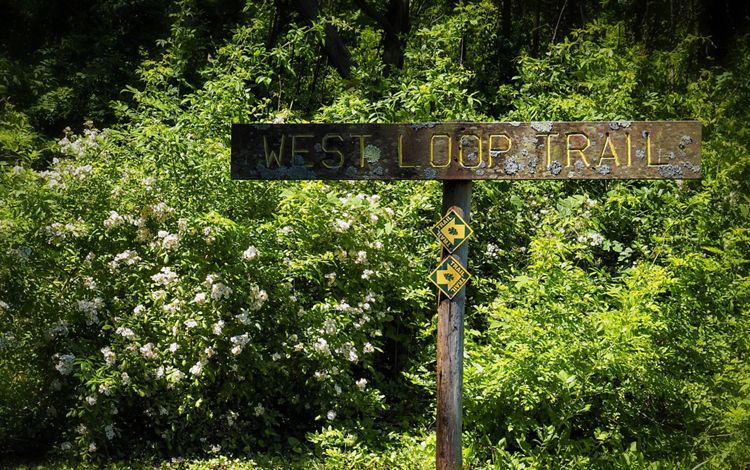
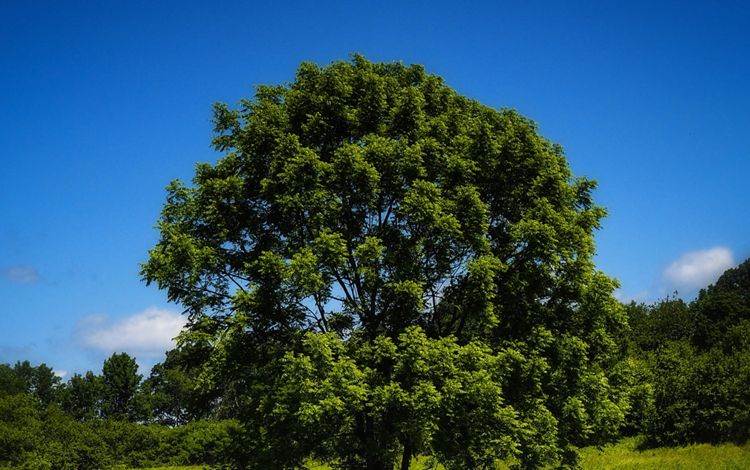
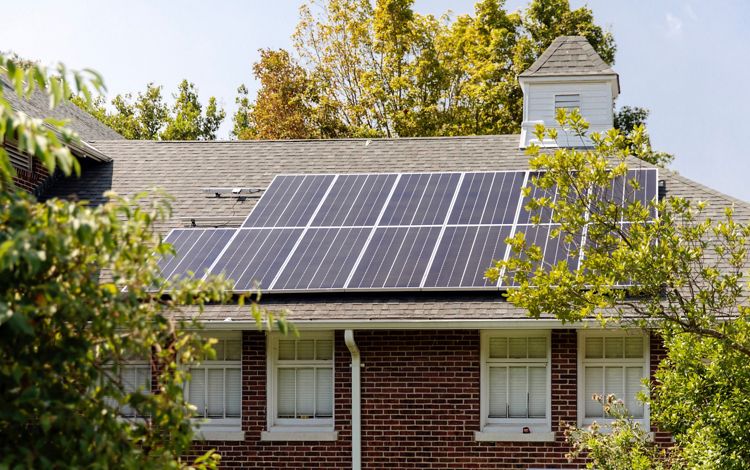
Butler-Huntington Woods
Highlights
Butler-Huntington Woods supports many species of birds, snakes and small mammals, including Eastern towhees, wood peewees, scarlet tanagers and wood thrushes in spring and summer. In winter and fall, keep your eye out for white-throated sparrows and juncos on the ground and chickadees and titmice up in the trees.
The wooded hills and ravines here are part of the Harbor Hill moraine, the hilly ridge that marks the place where the ice sheets paused during the last Ice Age, depositing pulverized materials. The swales between the high ridges cut a natural trail system several miles long through the woodlands. The watershed formed by the glacier-scoured hills and swales once fed water to Mill Creek, which powered a gristmill and flowed on to the Nissequogue River.
Getting Here
Butler-Huntington’s entrance is located on Fifty Acre Road, just south of Branglebrink Road, with a dirt parking area. The loop trail is 1.6 miles.
Parking: Parking for 5 vehicles with 1-2 spaces for roadside parking
Public Transport: LIRR to St. James Train Station, then cab to preserve
Cell Service: Spotty
Map and More Information
